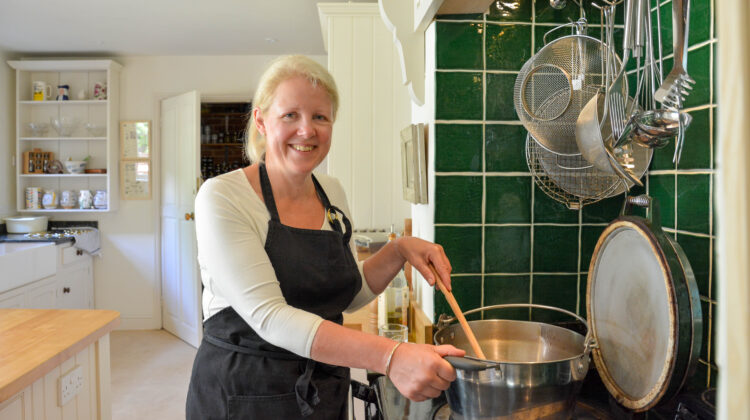
Jane Steward is the founder and owner of Eastgate Larder, the UK’s Medlar specialist. Having spent the best part of seven years growing the fruit, making preserves (and even a gin liqueur) she has written a book, the first about the Medlar. Here, she shares her story
Medlars started to take hold of me during 2015. At this time, I was working as an executive leadership coach and had my own company, Hayfield Group, which I had started in 2004. I was commuting weekly to London from Norfolk, where we moved to in 2012. The spur for change was a diagnosis and successful treatment for an early-stage cancer. I know that this would not have been spotted and resolved if I had still been living in London, because the diagnostic screening programme that found it didn’t exist there. It was the pioneering work of the gastroenterology department at the NNUH, which developed this particular screening programme for 55-year-olds. I owe them.
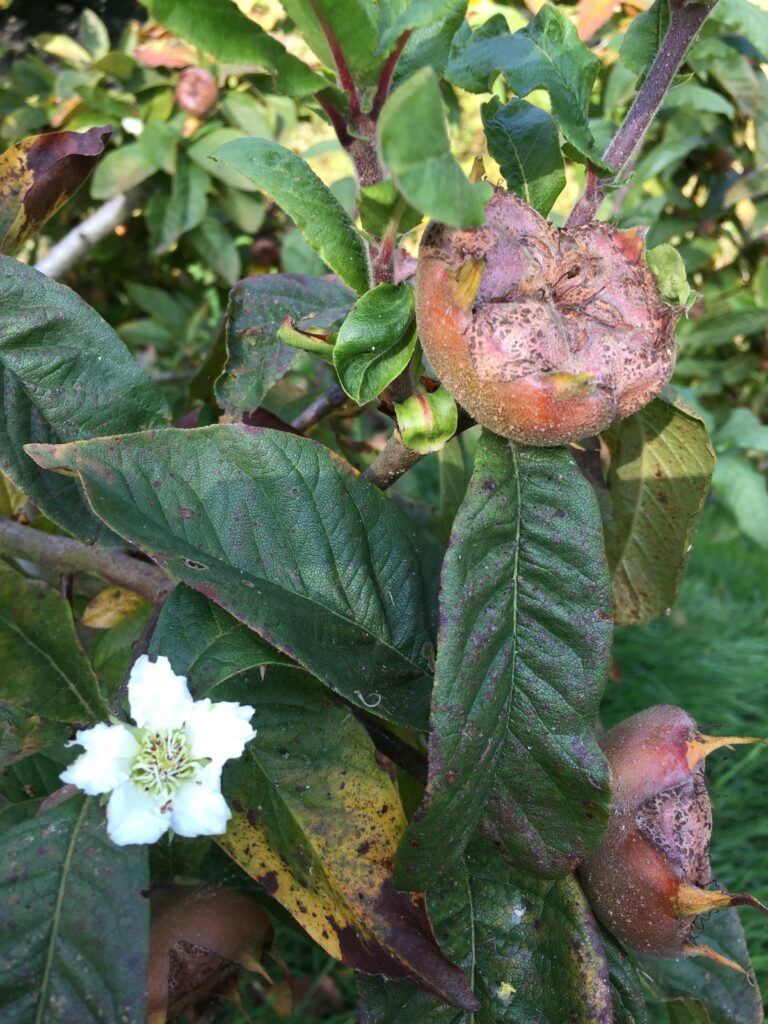
Eastgate Larder was officially launched at the Aylsham show in August 2016. Although I didn’t have very much stock to sell, as I only had 10 Medlar trees of my own, I did have plenty for people to taste. I also had an order book, which soon had a few lines filled. I took along a couple of medlar trees in pots to show people what they were, and I told my first stories about the Medlar to people who came up to the stall. In those days, I made Medlar jelly and Medlar fruit cheese, a paste made with set pulp of the fruit.
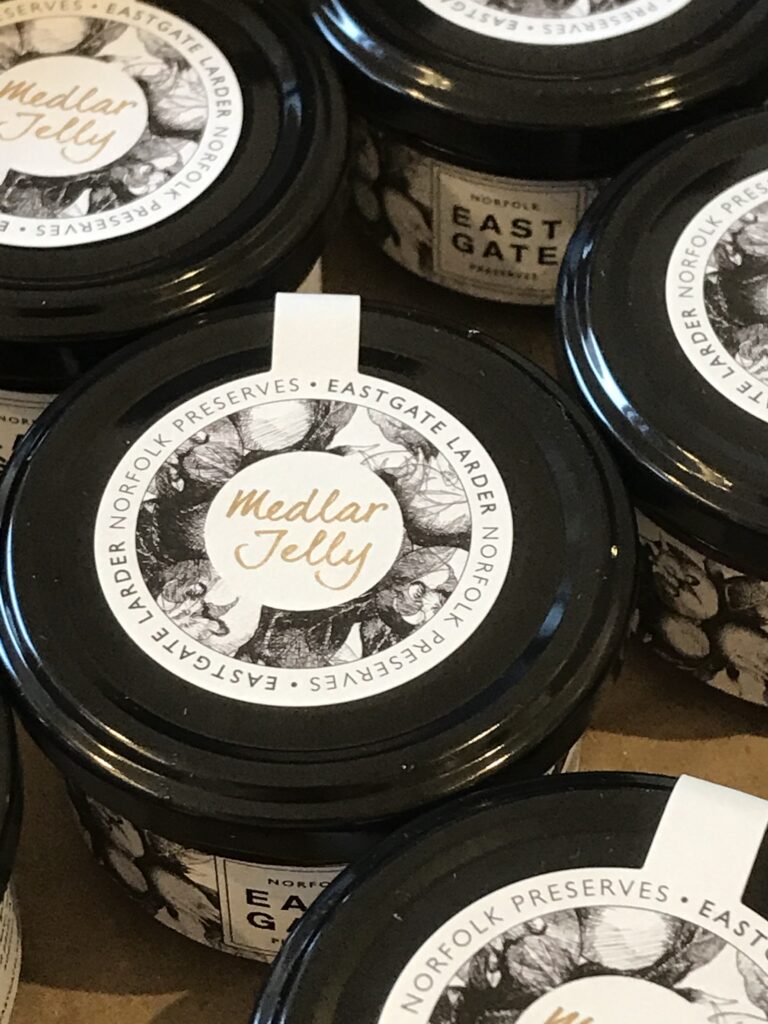
Medlar jelly is, by far, my best seller, which makes sense because it is an extremely versatile product. It is lovely served with all types of cheese, soft through to hard, blue, and made with every kind of milk. I particularly love it with stinky, soft cheeses, whether it’s a ripe Baron Bigod from Fen Farm Dairy in Bungay, or Jane Murray’s Norfolk White Lady, made near Dereham with milk from her herd of dairy ewes. The jelly is also excellent with charcuterie, game, poultry, and all meats other than beef. I stopped making Medlar cheese a couple of years ago because it wasn’t stacking up commercially.
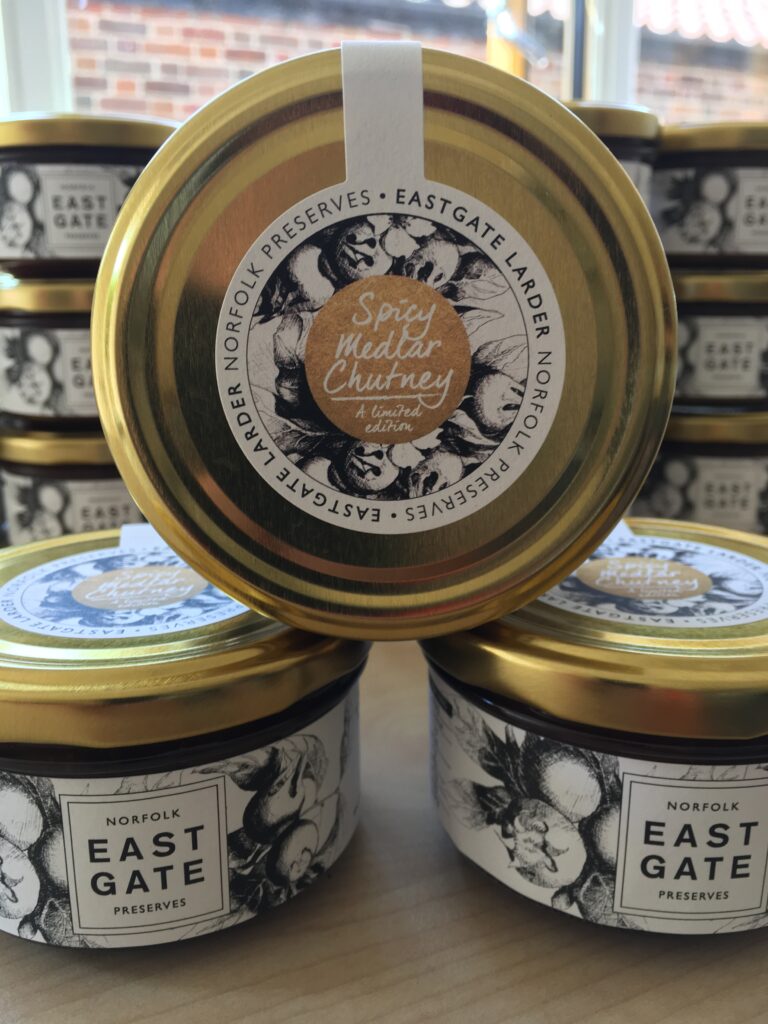
I introduced a spicy Medlar chutney in 2018, which I make in a limited edition of a few hundred jars. In 2021 the first bottles of Norfolk Medlar gin liqueur became available. These are made exclusively with fruit from the Eastgate orchard, which is now a national collection. The gin base is Norfolk‘s first artisan gin, made by Jonathan and Alison Redding. The combination of the cardamom and citrus notes in the gin, blended with nearly completely soft Medlar fruit for a few weeks makes a wonderful gin and tonic, cocktail with a sparkling white wine, and it is delicious meat served on ice with a twist of orange zest.

The Medlar is a first cousin of the apple, quince and pear. Like pears, Medlars reach edible ripeness when they are fully grown and have been picked. They need to be bletted, a phrase first used by Norfolk-born botanist, John Lindley, in the early 1800s. Bletting is a form of extreme ripening, which replaces the hard tannic and astringent flesh with a sweet, soft, fragrant fruit.
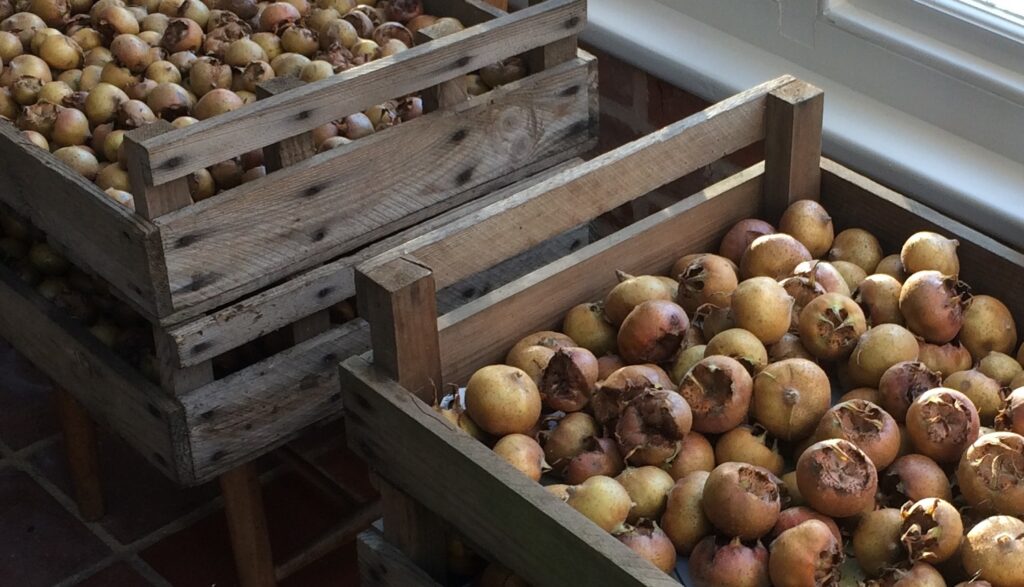
I think that Medlars are an important old English fruit for a number of reasons. They are extremely easy to grow, and a single tree is capable of producing a crop. They are ready to harvest from the end of October through to the early weeks of December, depending on the variety. They may be stored in sand in a cool cellar or outhouse, offering a rich source of nutrients and vitamins during the challenging early winter months. Unfortunately, and maybe because they require a little care after picking, they have gradually been eased out of our diets, being replaced by a range of fruit that is imported to the UK. However, the growing interest in eating seasonally, locally, and more naturally, is helping the gradual revival of the Medlar in our awareness. I observe this year on year as the number of independent farm shops, cheese shops and delis selling my Medlar jelly increases.
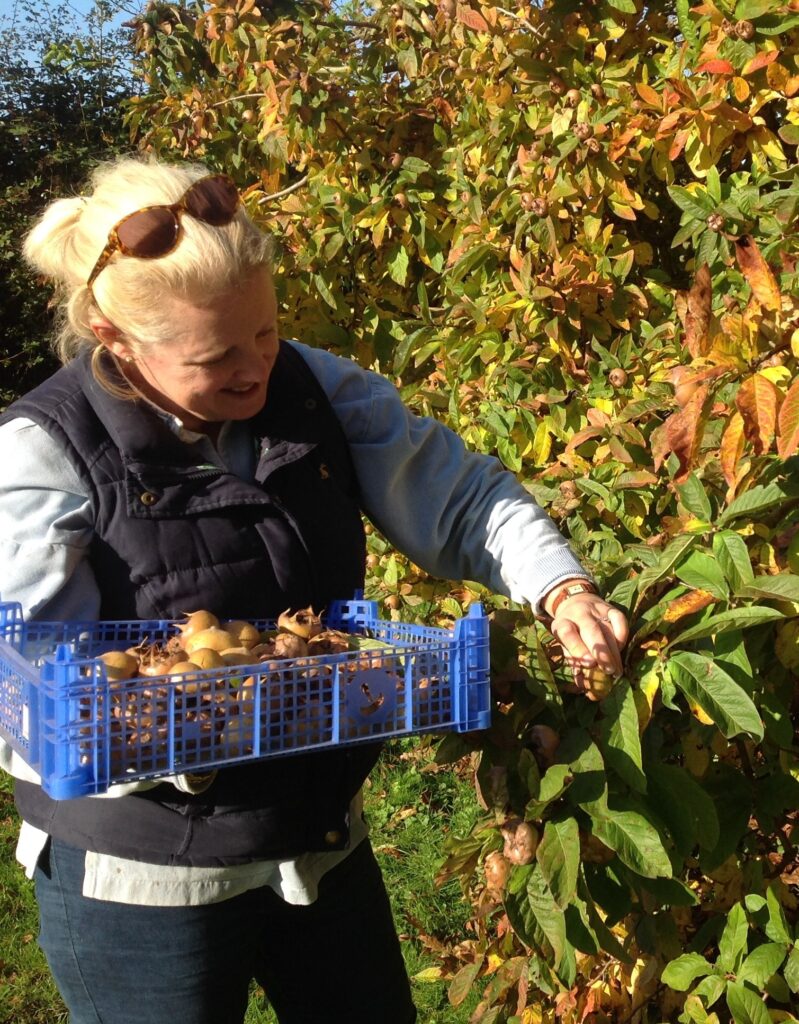
My vision for Eastgate Larder is that it should lead the revival of the Medlar’s fortunes. Everything I do, in and around the business, is done with this strategy firmly front of mind. The longer I work with Medlars, the more versatile and delicious I discover them to be. Writing the book – Medlars, Growing and Cooking – which is being published by Prospect Books this month, led me to discover the extraordinary range of ways in which Medlars can play a tasty as well as a health supporting role in our diets. In Turkey, the Medlar is revered as a fruit. It is widely grown and enthusiastically consumed. The book includes several recipes that use them, fully grown and unbletted.
I’m pleased to say that the National collection of Medlars is thriving in Norfolk. Since the orchard was planted, we have endured to extremely cold and dry winters and three very hot and dry summers.
The trees are tough and are living up to their reputation for hardiness in a wide range of temperatures. 2022 was a bumper year for many fruit varieties, and the Medlar is no exception. Many hundreds of kilos of fruit were picked between the end of October and the middle of November.
When I first met Medlars, in 2008, I looked everywhere for a book that would answer all the questions that started to form in my mind. It didn’t exist. Having decided to focus on a Medlar centred business, I threw myself into planting the orchard, making products, and selling it. It was a glaring gap on the bookshelf, and happily, publisher, Catheryn Kilgarriff of Prospect Books, also recognised the gap and invited me to fill it in early 2022. It will be a joy to have all the information between two.
The Eastgate Larder website has been refreshed and re-launched in anticipation of the book’s publication. It lists all my current retail outlets (in Norfolk, Suffolk, London and further afield) for my edible products, and I’m delighted to say that there are several who wish also to offer the book for sale. The Book Hive in Norwich and Aylsham will be a bricks and mortar stockist. They are kindly hosting the book launch on publication day, April 20. The book is also available from all the usual online providers.
I hope to travel to America in the autumn, and to Australia, this time next year, to promote the book. There are several growers and makers of Medlar products here, and the book has been enthusiastically received in both places. As for another book, I don’t think so. However, if the book generates interest in the Medlar from people that I have yet to meet and get to know, I would love to make a revised addition, potentially with additional stories, recipes, and other information. As I’ve discovered for myself, a book is never finished, it represents a snapshot of knowledge at a particular point in time.
‘Medlars – Growing and Cooking’, by Jane Steward, is published by Prospect Books on April 20, 2023. Visit Prospect Books and Eastgate Larder.
Images supplied by Jane Steward

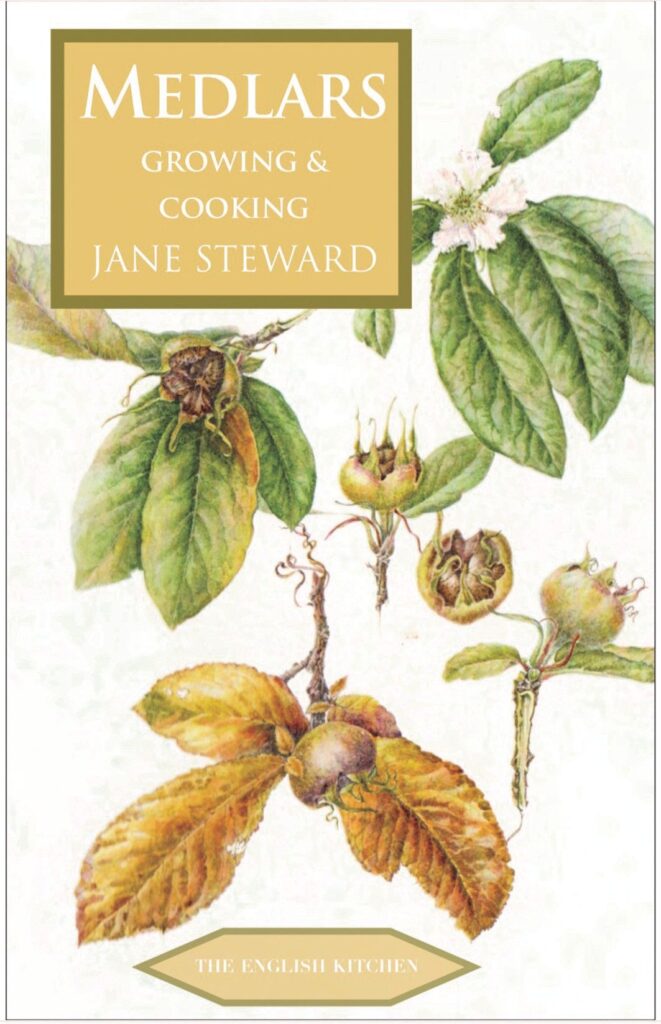








I’ve just had my first harvest from our Medlar and I’m fascinated at this fruit – lots of work to prepare however, many different recipes to choose from: X
X
You popped up after my google search and I’m delighted to find you and read your story…. I’m going to suggest my husband pops this book on my Christmas wishes
One of the random seedlings I planted ten years ago bore fruit in 2023. Serendipitously, this book on Medlars was published. Packed with lots of great information! I highly recommend this book to anyone interested in the ‘lost’ fruit.
Let me know if you ever decide to visit Kentucky.